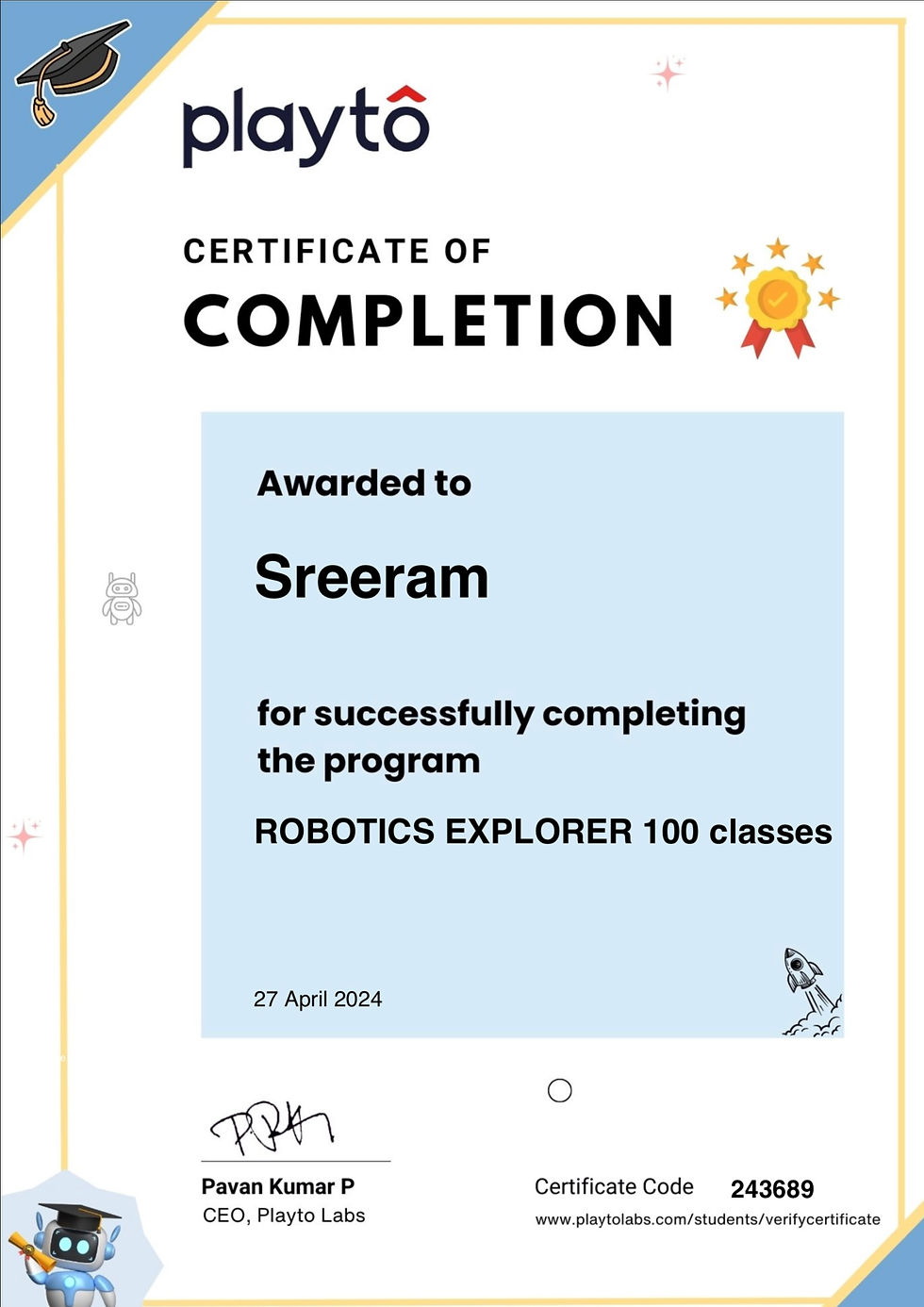IOT lesson 6- Health/pulse monitor
- sreeramchittayil
- Mar 9, 2024
- 1 min read
In the sixth lesson of the IOT course, i made a pulse monitor which required 4 different components. The health/pulse monitor project employs Arduino chips like the Expulsé chip, display, FTDI, and Lilypad to create a portable device for monitoring vital signs. Designed for accessibility and convenience, this compact device enables continuous pulse rate monitoring, making it ideal for fitness tracking, medical monitoring, and wellness management.
FTDI- the red chip has a crucial role in connecting the laptop and the whole circuit using Bluetooth. This chip is very important as it is a source of essential power to the whole project.
Display chip- the display will display your pulse.
Lilypad- the lilypad is a smaller version of the Aurduino.
Pulse chip- this chip will meansure your pulse.
Code for the whole project:
#define USE_ARDUINO_INTERRUPTS true
#include "SevenSegmentTM1637.h"
#include <PulseSensorPlayground.h>
PulseSensorPlayground Iryonin;
const int pulse=A0;
int Threshold=500;
const int LED=13;
const byte CLK=10;
const byte DIO=9;
SevenSegmentTM1637 display(CLK,DIO);
void setup() {
// put your setup code here, to run once:
Serial.begin(9600);
Iryonin.analogInput(pulse);
Iryonin.blinkOnPulse(LED);
Iryonin.setThreshold(Threshold);
display.begin();
display.print("H BT");
delay(1000);
if(Iryonin.begin()){
Serial.println("measuring commenced...");
}
}
void loop() {
// put your main code here, to run repeatedly:
int heartrate=Iryonin.getBeatsPerMinute();
if(Iryonin.sawStartOfBeat()){
Serial.println("heartbeat detected");
Serial.print("BPM= ");
Serial.println(heartrate);
display.clear();
display.print(heartrate);
}
delay(20);
}




Comments